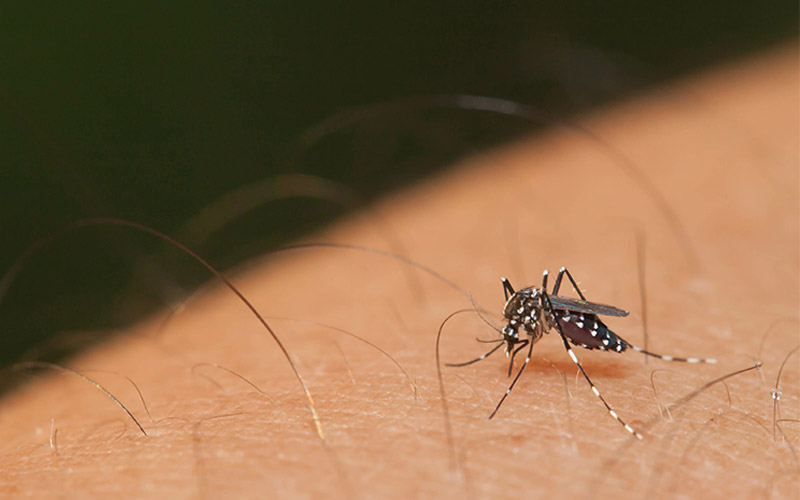Pest Library
PESTS IN WESTERN TENNESSEE & NORTHERN MISSISSIPPI
THE 901 PEST CONTROL LIBRARY
There are over 300 different species of subterranean termite. These pests feed on wood and are well-known for their destructive qualities. Look out for signs of darkening wood year-round as termites are known to swarm no matter the season. While these insects have been known to spread disease in the past, this is relatively uncommon and is more known for their ability to compromise the structural integrity of a building severely.

These large ants build nests inside dead, damp wood. Unlike termites, carpenter ants don’t eat wood and leave a trail of sawdust residue as they make tunnels and invade spaces. They are most active in the spring and remain relatively active until the end of October.

Fire ants are a species of ant that is specifically known for their sting. These ants will forage around outdoor dumpsters and trashcans for food and even have been known to hunt insects and small animals. A sting from a fire ant is not only painful and, in severe cases, deadly. Fire ants are most active in warm weather through April-September.

Black widows are known as the most venomous spider in North America, with venom 15 times stronger than that of a rattlesnake. While one of these spiders biting a human is rare, it is something to be aware of. This spider is most active in the spring and early summer.

Crazy ants are easy to decipher, as they make quick, unpredictable movements that gave them their name. While these ants’ bites aren’t as significant as that of a fire ant, crazy ants are highly destructive in nature, as they are known for their decimation of other insects – even birds and chickens! They are most active in the warmer months.

Earwigs are insects with pincers that are not known for anything other than being a nuisance. They are known for invading house plants or any areas next to a source of moisture. This insect is most common in the spring and early summer.

As the name hints, you’ll likely find these spiders in your garden. They are known for their distinctive coloring and web structures and can most commonly be found in the fall time.

This type of ant does not sting or bite, so it is not a direct threat to humans. However, argentine ants are a nightmare for gardening, as these ants protect invasive aphids and other garden-destroying insects. These ants will invade the home in the winter months when moisture is heavy and temperatures drop.

The brown recluse is a venomous spider that feeds on dead insects in their messy, secluded webs. They are brown and most active from March to October. This spider mostly prefers outdoors but will dwell in basements and crawlspaces as well.

Wolf spiders are mostly ground-dwelling and do not make webs. They are agile hunters due to their fantastic eyesight and are not typically a threat to humans. We tend to call wolf spiders “accidental intruders” as they only come indoors to escape cold temperatures, making them mostly a problem for property owners in the fall and winter.

Light brown or yellow, this ant type is known for its invasive qualities and for spreading hazardous pathogenic bacteria to humans. Pharaoh ants can spread salmonella, streptococcus, and staphylococcus and are mostly unaffected by the seasons due to their preference for indoor dwelling.

This is a small wingless insect that is silver or light gray. It’s movements mimic that of a fish and are not typically a threat to humans. However, they are known to destroy things like books, clothes, and wallpaper.

These ants are opportunists, as they’ll invade either indoor or outdoor spaces with ease. They love sugar and are often found trailing along with outdoor trash areas and kitchen floors where crumbs have fallen. They build nests in warm places close to moisture, like in pantries, under the kitchen sink, or in foundation cracks. They are likely to invade spaces during rainy weather or late fall when the weather starts getting colder.

Also known as the yellow fever mosquito, this mosquito type can spread chikungunya, dengue fever, Mayaro, Zika fever, yellow fever viruses, among other disease agents. They have white speckles on their legs and body and are most active during the day in warmer months.

Paper wasps gather fibers from dead wood and plant stems, which they mix with saliva, and use to construct nests. Their sting has been known to cause severe allergic reactions, and some people may require immediate medical attention. They become active in March.

Carpenter bees get their name for their habit of boring into wood. While they do not eat wood, they can cause significant damage to wood structures such as decks. They are very active in the early spring and summer.

This pest is well-known for being highly aggressive and is best to avoid at all costs. This hornet has an all-black body and white head and can be found nesting in trees and bushes. They appear in late summer when populations are largest.

Roof rats get their name for their habit of finding shelter in the upper parts of buildings. They are typically black or dark brown and reside in large populations. They are a danger to humans due to their likelihood of carrying diseases such as leptospirosis, salmonellosis, rat-bite fever, toxoplasmosis, and trichinosis.

This small rodent is hazardous to your home and health due to its destructive qualities and ability to spread disease. House mice can spread hantavirus, salmonella, and listeria through their urine, droppings, nesting materials, and saliva.

This is a small flightless insect that is known as external parasites. Since they live by consuming blood, they are drawn to the warm fur of house pets. Flea infestations are hard to control since these tiny bugs can hide in virtually any crevice of your space. Fleas can also spread flea-borne typhus, making mitigation necessary.

Ticks are tiny parasites that feed on the blood of humans or animals to survive through their complex life cycle. Since ticks are sensitive to CO2 exhaled by humans, they will find you and latch on at any chance they get. Bites from a tick can give a human Lyme disease, ehrlichiosis, and tularemia.

Though generally venomous, centipedes are not known to be particularly harmful to humans. They reside in basements, drains, and other areas of a home where moisture is present.

Yellow jackets are another aggressive flying insect that is attracted to sweet-smelling foods and other fragrant things. Though they eat garden-damaging pests, their stings are excruciating and best to avoid. They are most active in late summer and early fall.

These bugs feed on human blood and are frequently found in beds, couches, and other cloth furniture. Their bites are itchy and dangerous and can result in several health issues like allergic reactions, skin rashes, and even psychological effects. Bed bug bites can also lead to skin changes ranging from small areas of redness to protruding blisters.

Also known as the house container mosquito, the culex mosquito is a small, brown, flying insect predominately known for transmitting the West Nile Virus, among other serious diseases. They typically come out around dusk and dawn from May-October.

Cockroaches are house-infesting insects that are attracted to warm, humid climates with a nearby food supply. They are invasive, hard to kill, and a problem year-round, making mitigation necessary. These insects carry many diseases, such as cholera, salmonellosis, typhoid fever, dysentery, leprosy, and more.

Also known as the yellow fever mosquito, this mosquito type can spread chikungunya, dengue fever, Mayaro, Zika fever, yellow fever viruses, among other disease agents. They have white speckles on their legs and body and are most active during the day in warmer months.

